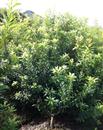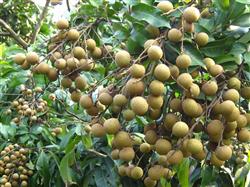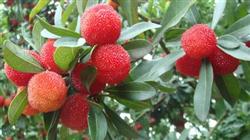Four measures to control the growth and growth of bayberry trees

If the bayberry planted on the deep and fertile soil layer is allowed to grow naturally, the vegetative growth will be too prosperous, resulting in most of the nutrients of the tree being consumed by the growth of branches and leaves, resulting in little or difficult formation of flower buds, late fruiting or low yield. There are four measures to control the growing shoots of bayberry trees: 1. Control the amount of nitrogen fertilizer and appropriately increase the amount of phosphorus and potassium fertilizer. When fruit-picking fertilizer was applied from the end of June to the beginning of July, 10 kg of plant ash and 0.5 kg of calcium superphosphate or 1.5 kg of compound fertilizer could be applied per plant, combined with spraying 800-fold solution of new high-fat film to improve the utilization rate of effective components of fertilizer. two。 Root-breaking treatment. In late summer and early autumn, cutting roots in ditches with a depth of 30cm to 40cm near the crown dripping line can inhibit branch growth and promote fruit. at the same time, tree generals should be sprayed and sterilized in the whole garden to reduce the source of disease. 3. Ring cutting. The large branches were cut with thread in April (from the end of Xiehua to the first physiological drop). Huawang No. 2 was smeared to inhibit the growth of the main shoot, concentrate nutrients to supply the fruit to control the crown and promote the flower, improve the fruit expansion quality and prevent the fruit from falling. 4. Caohuawang 3 was sprayed on the crown from the first ten days of October to the middle of March of the following year, which promoted the nutrient reflux of the top tip and inhibited the growth of the main shoot.
- Prev

Post-harvest management of litchi and longan
Potassium chlorate was first used to promote flowers in longan in Taiwan, and the out-of-season cultivation of longan in production began in Thailand. In recent years, longan production areas in our province are also trying to use potassium chlorate to promote flower cultivation of out-of-season longan, some of which have achieved certain economic benefits, but most orchards have poor or even no.
- Next

Planting techniques of Organic Waxberry (1)
Myrica rubra is the most characteristic subtropical eco-economic tree species with wide adaptability. It can grow and show good characters in most parts of the south, especially in slightly acidic and acidic soils. First, the establishment of the garden red bayberry likes dampness and shade tolerance, large crown, wide root distribution, organic bayberry garden requires to be built at altitude.
Related
- Moge, come on! The staff of the peasant association in the producing area of cantaloupe were frightened when the crowd gathered.
- Causes and Solutions of low Fruit setting rate of Apple
- Symptoms and control measures of passion fruit virus disease
- Fruit growing lesson: how do apple orchards keep high yields?
- Can you build orchards in the mountains? What are the pros and cons?
- How to manage the coloring period of Crisson grape?
- This paper introduces the processing technology of two kinds of fig products.
- How much is a month for retired teachers in rural areas by 2020?
- How can strawberry planting increase sugar content? We should pay attention to management in many aspects.
- What are the cultivation techniques on how to improve the yield of golden fruit?

